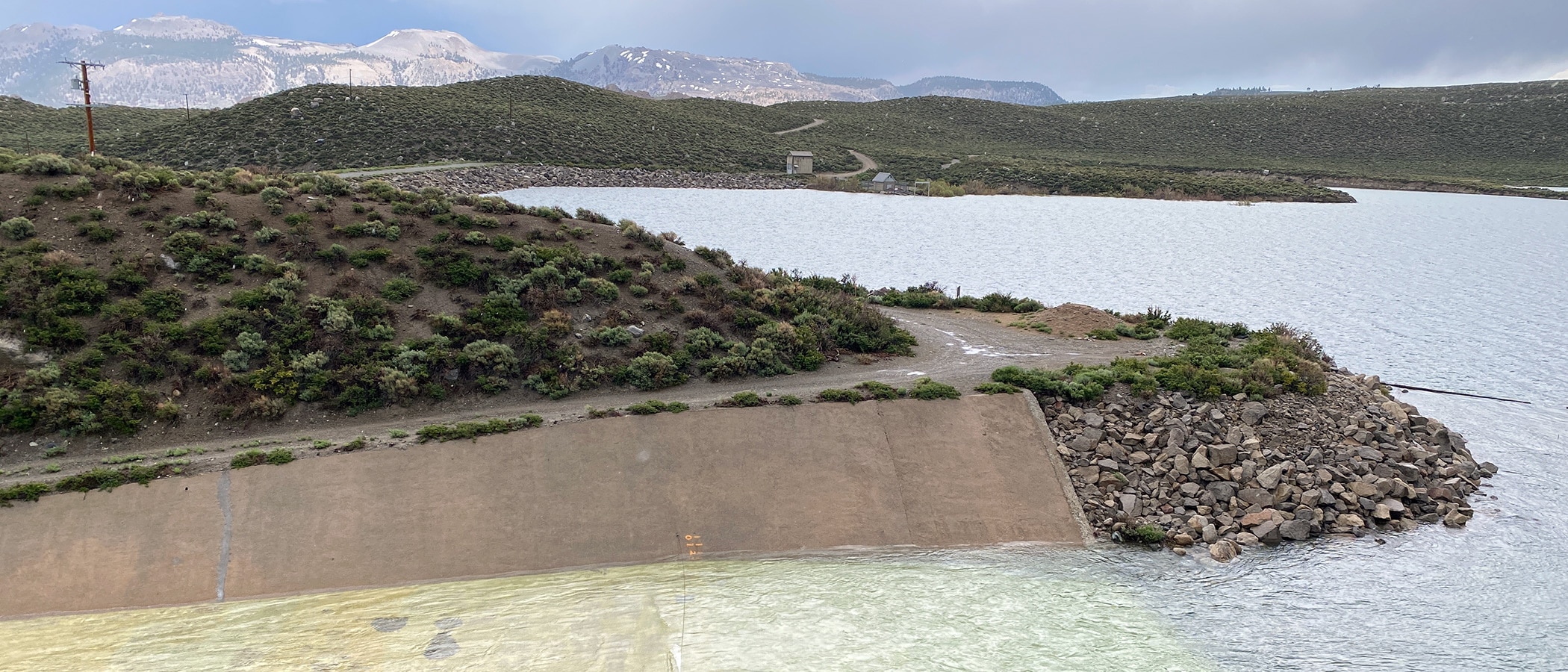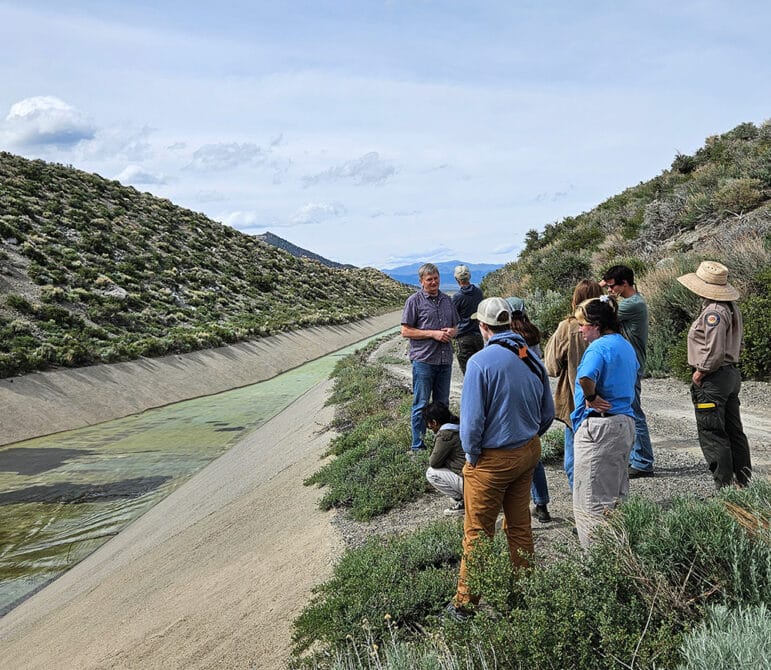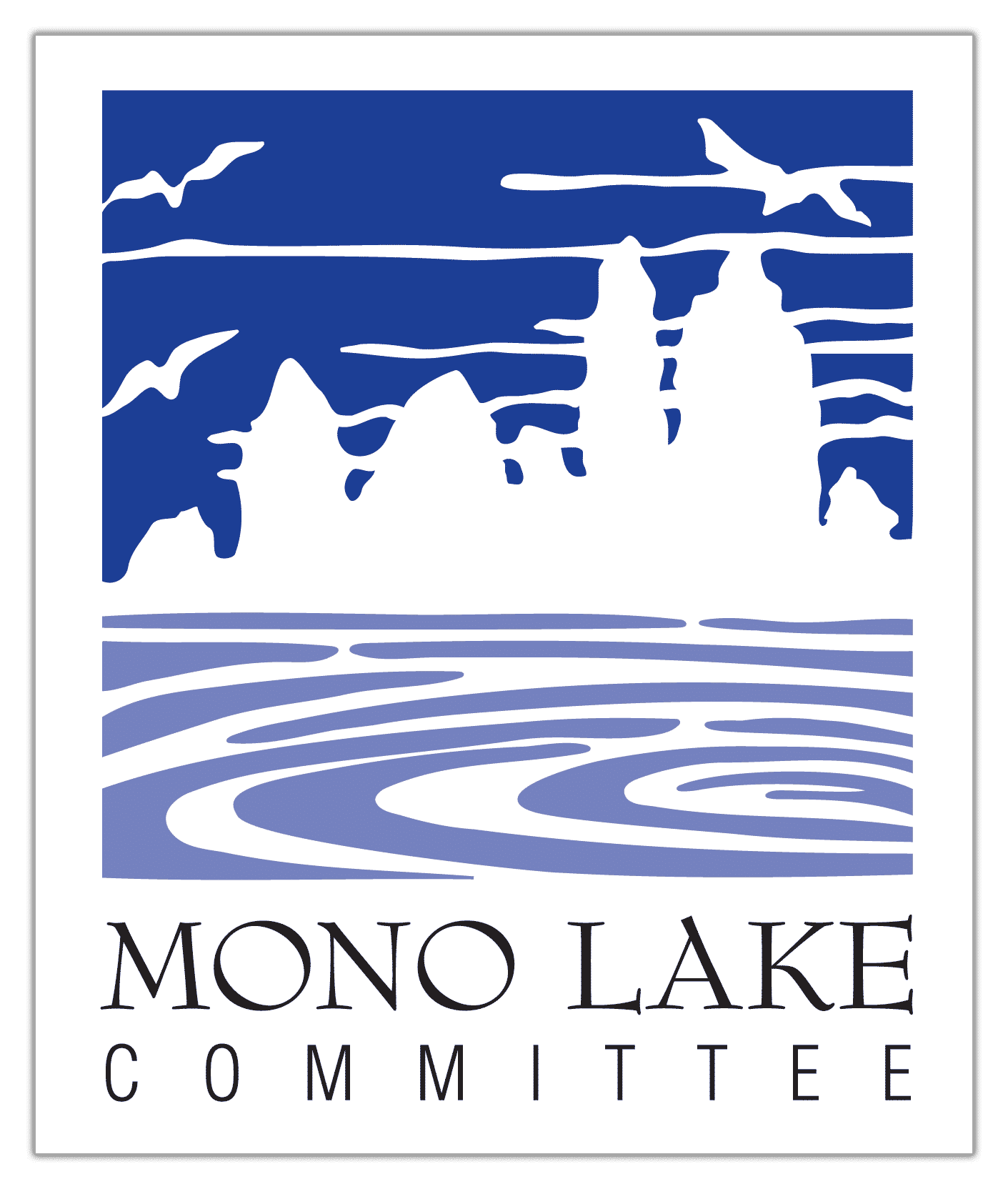
The Los Angeles Department of Water & Power (DWP) continues to develop a multi-phased project focusing on Grant Lake Reservoir infrastructure. The project includes the long-overdue modification to the Grant spillway needed to provide the required Stream Ecosystem Flows (SEFs) mandated by the California State Water Resources Control Board and agreed to under the 2013 Stream Restoration Agreement. However, with the additional problem of a malfunctioning rotovalve, dam safety and infrastructure upgrades have added to the delay and the scope of the original spillway modification.
According to DWP’s December 30, 2024 report to the State Water Board, DWP is abandoning the original outlet design of Langemann gates in favor of siphons. DWP plans to bury four 48-inch diameter siphon pipes, encased in concrete, adjacent to the existing spillway. The siphons will begin at the reservoir and extend 1,700 feet into the unlined portion of the spillway.
Siphons were considered in 2013 as a design option during negotiations ahead of the Stream Restoration Agreement, but at the time DWP had operating concerns about the concept. However, in recent years, DWP installed siphons along the Los Angeles Aqueduct at Tinemaha Reservoir south of the town of Big Pine, and it is now advancing a siphon outlet system at Grant. The new system, in combination with the existing Mono Gate One Return Ditch, will need to reliably provide sufficient SEFs to Rush Creek across all runoff year-types. According to DWP, the siphon system would also serve as a reliable outlet for the reservoir during subsequent replacement of the rotovalve and future reservoir management.

For years DWP has been concerned about the rotovalve; its replacement was purchased more than six years ago. In 2023, the rotovalve began to malfunction, and questions regarding dam safety superseded the original reservoir modification plan to deliver the reliable SEFs needed to restore Rush Creek. According to DWP’s December 2024 report, the siphon system is tentatively scheduled for completion in late 2029 or early 2030. The work to replace the rotovalve may extend into 2034.
DWP has moved slowly on the modification to the Grant spillway and it’s not clear why the rotovalve, a fundamental piece of dam safety, wasn’t prioritized for replacement years ago. There is an ecological cost to Rush Creek when the reliable delivery of SEFs is delayed, and this was why the State Water Board set deadlines for outlet modification with construction to begin in 2024. Deadlines were extended last year and will now need to be extended again.
The Mono Lake Committee is working to make sure that DWP reports to the State Water Board and principal parties in the design, planning, and permitting process. The goal is to expedite the work ahead and confirm that the siphons will successfully deliver the required SEFs that Rush Creek needs.
This post was also published as an article in the Winter & Spring 2025 Mono Lake Newsletter. Top photo by Elin Ljung.
